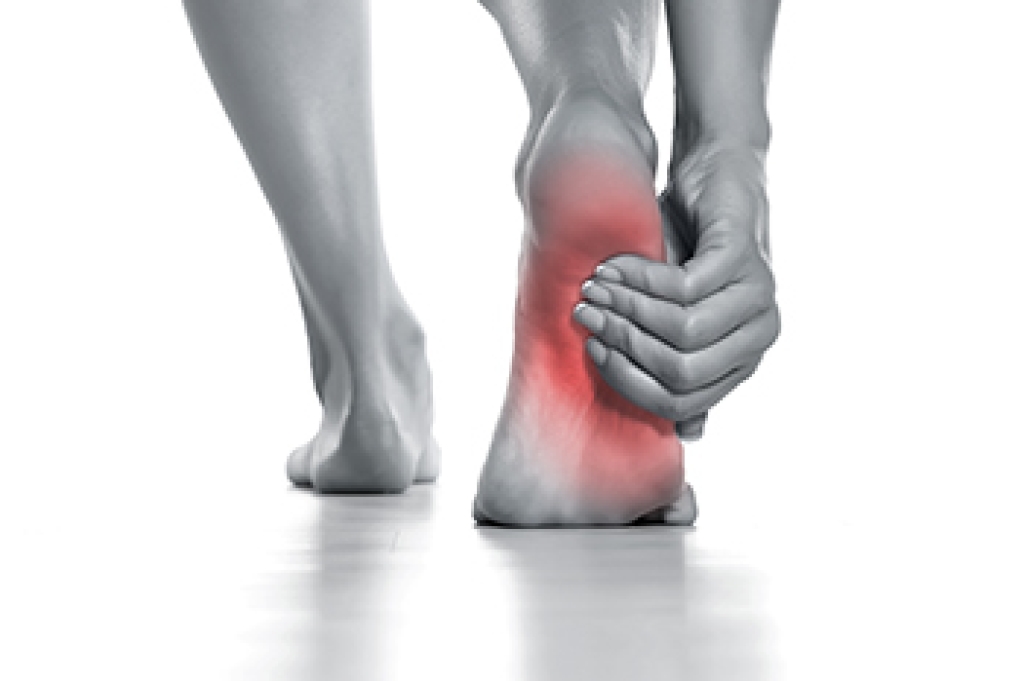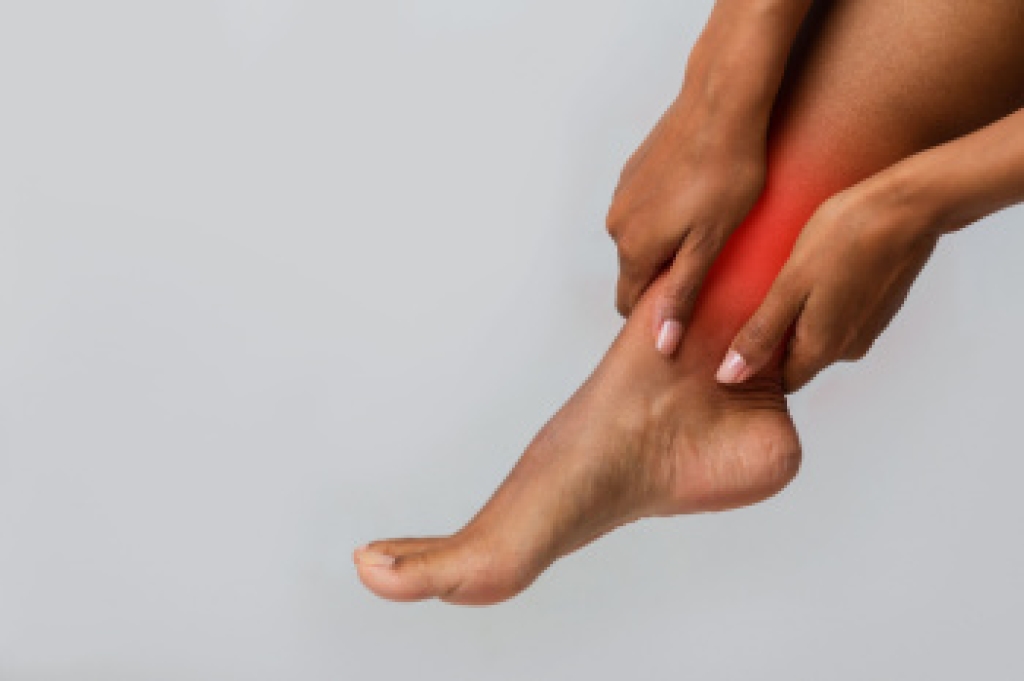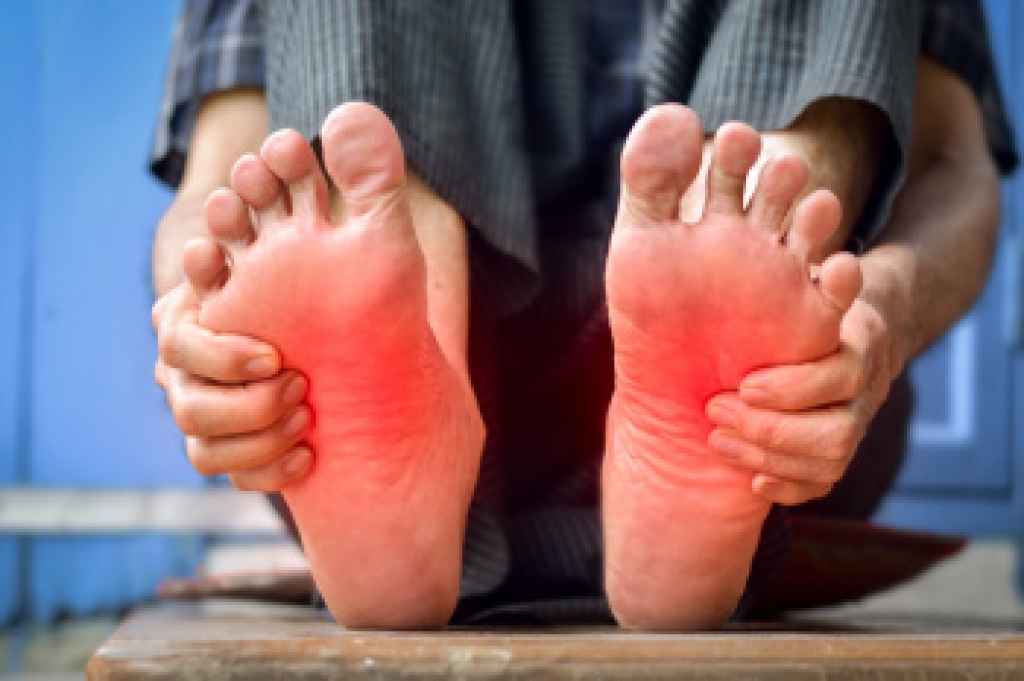
Arch pain is a common foot complaint that affects people of all ages. It often feels like a burning or aching sensation in the bottom of the foot, especially in the arch area. Symptoms may worsen after long periods of standing, walking, or physical activity. Causes can include plantar fasciitis, flat feet, high arches, overuse injuries, or wearing unsupportive footwear. The arch may appear swollen, red, or tender to the touch. A podiatrist can provide an accurate diagnosis through a physical exam, gait analysis, and possibly imaging tests. Depending on the cause, treatment includes custom orthotics, stretching exercises, footwear recommendations, or anti-inflammatory medications. In more severe cases, injections or surgery may be considered. Arch pain can interfere with daily activities and overall comfort, so it is suggested that you make an appointment with a podiatrist to address the issue and restore healthy foot function.
Foot Pain
Foot pain can be extremely painful and debilitating. If you have a foot pain, consult with Monique Mitchell, DPM from Family Foot Centre. Our doctor will assess your condition and provide you with quality foot and ankle treatment.
Causes
Foot pain is a very broad condition that could be caused by one or more ailments. The most common include:
- Bunions
- Hammertoes
- Plantar Fasciitis
- Bone Spurs
- Corns
- Tarsal Tunnel Syndrome
- Ingrown Toenails
- Arthritis (such as Gout, Rheumatoid, and Osteoarthritis)
- Flat Feet
- Injury (from stress fractures, broken toe, foot, ankle, Achilles tendon ruptures, and sprains)
- And more
Diagnosis
To figure out the cause of foot pain, podiatrists utilize several different methods. This can range from simple visual inspections and sensation tests to X-rays and MRI scans. Prior medical history, family medical history, and any recent physical traumatic events will all be taken into consideration for a proper diagnosis.
Treatment
Treatment depends upon the cause of the foot pain. Whether it is resting, staying off the foot, or having surgery; podiatrists have a number of treatment options available for foot pain.
If you have any questions, please feel free to contact our office located in Garden Hills, Nassau, Bahamas . We offer the newest diagnostic and treatment technologies for all your foot care needs.




